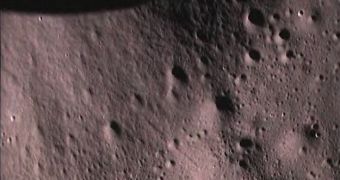The first Indian unmanned spacecraft that successfully made it to the Moon, Chandrayaan-1, has recently deployed its probe called the Moon Impact Probe, or MIP. The device performed a 25-minute trek to the lunar surface, on which it crashed. The impact damaged it and brought its functionality to an end. But the focus of the operation, which was to perform a series of experiments and measurements, as well as to provide images for the duration of the short flight, was completed.
The box-shaped MIP had been set loose from the Chandrayaan-1 (Indian for "Moon vehicle-1") craft at an altitude of about 100 km (62 miles) above the surface of the Moon only to smash on its southern pole 25 minutes later, at 10:01am EST, according to Bangalore officials. "It was a flawless operation," shared SK Shivakumar, director of ISRO Telemetry's tracking and command network, quoted by Reuters. The main goal of the probe, which was to be officially named "Aditya," was to find traces of the rare isotope Helium 3, which could be used in nuclear fusion reactors as a major future energy source.
The 34 kilogram-heavy MIP also tried to stir some lunar dust as a result of the impact, for its instruments to analyze. Among its tools were an imaging device that took pictures before the crash and which, together with a radar altimeter that calculated the descent rate, would prove to be a great asset for following soft-landing missions, as well as a mass spectrometer that studied the very thin atmosphere of the Moon during the short journey. Here's the Indian Space Research Organization's view of the mission, as cited by UniverseToday:
"MIP’s 25 minute journey to the lunar surface began with its separation from Chandrayaan-1 spacecraft at 20:06 hrs (8:06 pm) IST. This was followed by a series of automatic operations that began with the firing of its spin up rockets after achieving a safe distance of separation from Chandrayaan-1. Later, the probe slowed down with the firing of its retro rocket and started its rapid descent towards the moon’s surface. Information from the instruments was radioed to Chandrayaan-1 by MIP. The spacecraft recorded this in its onboard memory for later readout. Finally, the probe had a hard landing on the lunar surface that terminated its functioning."

 14 DAY TRIAL //
14 DAY TRIAL //